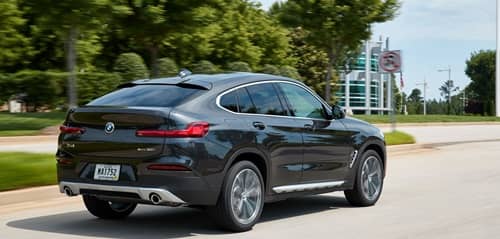Many drivers find car insurance expensive. Many factors affect prices. Your driving history, car type, and location matter. Insurance companies assess risk using many factors. Understanding why your premium is high helps you cut costs. Insurers charge differently for their policies.
Factors That Increase Car Insurance Costs
Age And Driving Experience
Insurance costs are higher for young drivers. Inexperienced drivers cause more accidents. They cost more because insurers consider them high-risk. Older, clean-record drivers pay less. Traffic experience helps drivers avoid accidents. Drivers with experience pay less for insurance. Long-term accident-free driving saves money. Teens and young adults pay more. Their accident risk is higher than older drivers’. Insurance costs decrease with experience. Safe driving lowers premiums over time.
Driving Record
Traffic violations and accidents raise car insurance costs. Multiple-accident drivers are risky. Insurance companies review driving records. Speeding ticket history raises premiums. Zero-violation drivers get better rates. A clean driving record shows responsibility. Avoiding reckless driving lowers insurance costs. A minor violation can raise premiums. Safe drivers receive insurance discounts. As your record improves, your premium may drop. A defensive driving course cuts costs. Safe driving saves money and prevents accidents.
Credit Score
Some insurance companies base premiums on credit scores. High costs can result from low credit. Lower scores indicate financial risk, say insurers. Paying bills on time boosts credit. Insurance rates drop with a higher score. Regular credit report checks help maintain a good score. Spending time improving your credit can save you money. Managing debt well affects your insurance rate. Insurers value financial responsibility. Better rates come with good credit.
Location
Car insurance costs vary by location. City rates are usually higher than rural. Urban areas have more thefts and accidents. Traffic increases crash risk. Insurance companies charge more in claim-prone areas. Low accident rates are common in rural areas. Less traffic means less risk. Weather affects insurance prices.
Flood-prone areas have higher premiums. Moving may affect your rate. Plan better by checking insurance rates before moving. Safe neighborhoods reduce theft.
Vehicle-related Factors
Car Type And Value

Insurance costs depend on your car. Premiums are higher for expensive cars. Luxury car repairs and replacements cost more. Sports car insurance is more expensive. Cars built for speed increase accident risk. Safe, reliable cars are cheaper to insure. Before setting premiums, insurers check safety ratings. A car with advanced safety features is cheaper. Insurance rates are affected by theft risk. Different car models are stolen more often. A car with less theft risk lowers premiums.
Safety Features
Car safety features affect insurance rates. Autos with airbags and anti-lock brakes are often discounted. Advanced features reduce crashes. Cars with crash prevention get lower insurance rates. Lane departure warnings and automatic emergency braking prevent crashes. Insurance companies value safety because it reduces claims. Older cars without security features may cost more. Car security devices help. Anti-theft alarms and tracking reduce theft risks. For safer cars, insurers reward drivers. Finding safety discounts before buying a car saves money.
Theft Rates
Insurance companies research car model theft rates. Some cars are stolen more. Insurance costs are higher for high-theft cars. Thieves’ favorite models have higher premiums. Installation of anti-theft devices cuts costs. Tracked cars are less likely to be stolen. Security features earn insurance discounts. Secure parking helps. Garages and well-lit areas reduce theft. Comprehensive auto insurance raises premiums for theft. Before buying a car, check theft rates to save. Choosing a less targeted model reduces insurance costs.
Policy And Coverage Choices
Coverage Limits
High coverage limits raise insurance costs. Collision and comprehensive increase premiums. Minimum coverage is cheaper but less secure. Insurance companies charge more for extensive coverage. Drivers with full coverage pay more. Lower limits cut costs but may not cover everything. Some lenders require full car coverage to finance. Right protection and affordability balance is key. Insurance costs are reduced by assessing coverage needs. Limits tailored to your budget save money. Checking policy details regularly prevents overpayment. Insurance costs drop over time by reducing unnecessary coverage.
Deductibles
A deductible is the quantity you pay before insurance covers damage. Higher deductibles, lower premiums. Lower deductibles raise monthly costs. The right deductible affects insurance costs. Accident costs are higher with a high deductible. Low-claim drivers benefit from higher deductibles. Insurance companies charge more for low deductibles. Risk and cost must be balanced. Reviewing deductibles saves money. Lowering your deductible lowers premiums. Deductibles affect insurance rates. Choose a suitable amount to avoid financial strain after an accident.
Optional Coverages
Additional coverage raises car insurance costs. Roadside assistance, rental reimbursement, and gap insurance raise costs. In emergencies, extra protection helps. Insurance companies offer extra security coverages. Drivers should assess extra coverage needs. Not all options are worth the extra money. Avoiding unnecessary add-ons lowers insurance costs. Policyholders can tailor coverage. Reviewing optional coverages cuts costs. Premiums are low by selecting essentials. Reviewing policy details prevents spending on unwanted services. Understand optional coverages for cost-effective decisions.
External Market Factors
Insurance Company Pricing Models
Each insurer calculates rates differently. Companies evaluate risks using various criteria. Some insurers charge drivers more. Comparing quotes from different providers lowers prices. Some companies specialize in safe driver discounts. Insurance company’s prices are based on claims history. Discounts vary by provider. Selecting the right insurer can save money. Shopping around guarantees the best price. Understanding insurer pricing aids decision-making. Policyholders should compare coverage options before buying. Insurance costs can be reduced by reviewing pricing models.
Claims Frequency In Your Area
Local claims affect your premium. High accident rates raise insurance costs. Insurance companies charge more for frequent claims. Busy roads cause accidents. More claims increase insurer risk. In low-claim areas, rates are lower. Natural disasters affect claim frequency. Premiums are higher in extreme weather areas. Checking local claim trends helps estimate costs. Moving to a safer area reduces insurance costs. Insurers price for regional risks. Manage insurance costs by knowing local claim frequency.
Economic Factors
The economy affects car insurance rates. Repair and medical costs rise with inflation. Higher costs raise premiums. Insurance prices change with the market. Rising labor costs affect claims. Vehicle prices affect insurance rates. Repairing expensive cars costs more. Medical bills raise liability insurance rates. Economic downturns may boost fraud. Insurers charge more for financial risks. Studying economic trends helps explain insurance fluctuations. Reviewing policy costs during inflation helps the budget. Understand market changes to predict premium increases.
Conclusion
Many factors affect car insurance costs. Age, driving record, and location affect premiums. Vehicle type and coverage affect costs. Price-setting insurance companies evaluate risks differently. Shopping and reviewing your policy saves money. Driving safely, having good credit, and adjusting cover lower costs. Compare insurers and discounts for better deals. Understanding why insurance is expensive improves decisions. Preventive measures save money. Rates are best when policies are reviewed regularly. Smart choices reduce car insurance costs.

